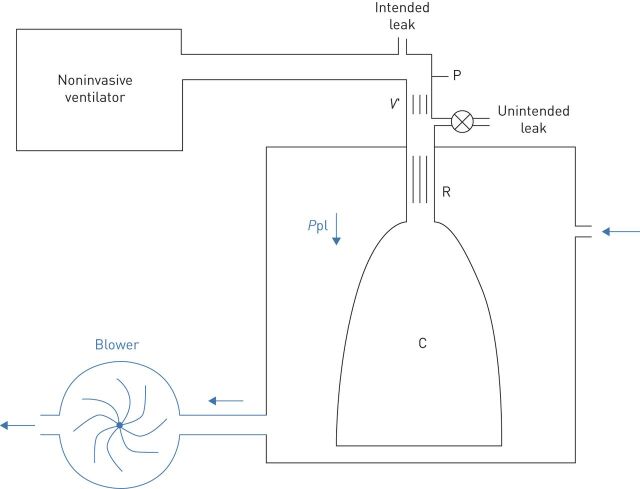FIGURE 2.
An active patient simulator to test the mechanical ventilator prototype. Passive respiratory mechanics was mimicked by a resistance–compliance (R and C, respectively) passive model enclosed in a box. The active component inducing breathing in the model consisted of a blower connected to the box wall. As blower flow increased, the pressure in the box (simulated pleural pressure (Ppl)) progressively decreased to negative values, inducing inspiration in the R–C lung model. The active breathing model was connected to the ventilator under test by a conventional tube and a conventional intended leak to avoid rebreathing. An unintended leak allowed simulation of air leak caused by the lack of a perfect seal between the nasal mask and the patient's face. Pressure (P) and flow (V′) were measured at the level of the nasal mask by means of transducers.

